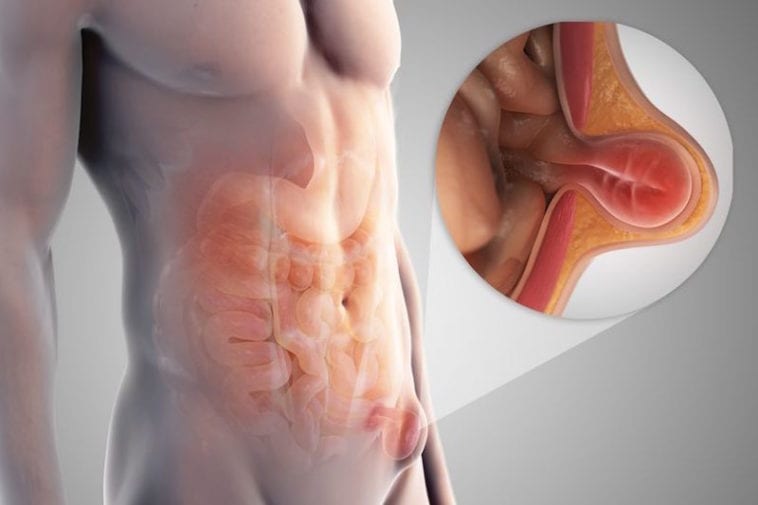Abdominal Hernia
Hernia repair is one of the most common operations performed in the UK. Although small groin hernias may be repaired under local anaesthetic the majority will require a general anaesthetic so that the tummy wall is fully relaxed.

Do I have a Hernia?
Put simply a hernia is a hole that something protrudes from. By far the most common type of hernia is an inguinal hernia in the groin. The hole in the abdominal wall muscle allows bowel to protrude which can be uncomfortable and ultimately result in the bowel becoming stuck and the blood supply being compromised – strangulation. Hernia’s of the belly button are also common. Hernia’s do not get better by themselves, although some people find the discomfort can be alleviated by a support.
You might first notice a squishy lump that comes and goes (especially after lifting heavy objects). Overtime the lump may be present most of the time and only disappear or reduce when you lie down. Your surgeon will be able to confirm the diagnosis. If the lump ever becomes painful, tender or discoloured you should see a doctor straight away.
The Anatomy of Hernia - The Different Types
The most common location for hernia is the abdomen.
The abdominal wall, a sheet of tough muscle and tendon that runs down from the ribs to the legs at the groins, acts as the body’s corset. Its function, amongst other things, is to hold in the abdominal contents, principally the intestines.
If a weakness should open up in that wall, then the corset effect is lost and what pushes against it from the inside (the intestines) simply pushes through the opening. The ensuing bulge, which is often quite visible against the skin, is the hernia.
The word Hernia means ‘something coming through’.
These windows of weakness commonly occur where there are natural weaknesses in our abdominal wall.
Examples of these are the canals (inguinal and femoral) which allow passage of vessels down to the scrotum and the legs, respectively. The umbilical area (navel) is another area of natural weakness frequently prone to hernia. Another area of potential weakness can be the sites of any previous abdominal surgery, the incisional hernia.
Pain is a very serious warning indeed. The hernias that DO hurt are also the ones more likely to strangulate (more on strangulated hernias later) which is as bad news as it could be.
One more fact is that the hernias that are left until they hurt tend to cause the longest post-operative pain.
A useful ‘Golden Rule’ is that once you are aware of the symptoms and a hernia has been diagnosed, it is in your interests to have it fixed as soon as possible and as well as possible
Treatments
Upper Endoscopy
An upper endoscopy is a procedure used to determine the cause of gastrointestinal disorders and symptoms including heartburn, the presence of hiatal hernias, the cause of abdominal pain, unexplained anaemia, and the cause of swallowing difficulties, upper GI bleeding, and the presence of tumors or ulcers.
